Chinese small UAV special purpose
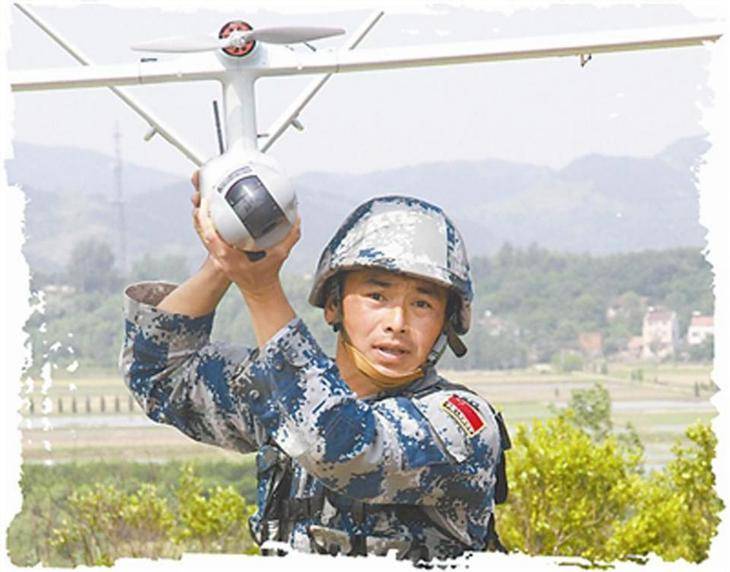
Light unmanned reconnaissance of the PLA Ground Forces
Small relatively simple drones with an electric motor equipped with television cameras are intended for use on the line of combat contact with the enemy. As a rule, these devices can be started with hands or with a simple launcher. Although the miniature drones look against the background of heavy and medium UAVs shown at the parade dedicated to the 70 anniversary of the founding of the PRC, it is not so impressive, their role can hardly be overestimated. Light winged cars with a propeller, similar to children's toys, allow you to look into the folds of the area or check the "green" for an ambush and save the lives of fighters.
In 2007, the PLA entered service with the CH-802 UAV (export name Rainbow 802). This light class apparatus was created by specialists from the 701 Research Institute, which is part of the China Aerospace Science and Technology Corporation (CASC), and is intended for use by special forces and in the battalion unit of the ground forces.
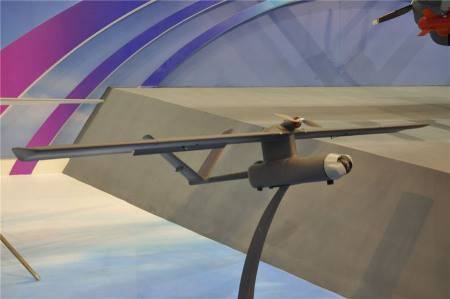
The device, weighing about 6,5 kg, has a relatively short cylindrical fuselage, a straight wing and a vertical V-tail, located on a long tail boom. The wing is attached to the rear of the fuselage with a rectangular rectangular pylon. The CH-802 UAV is driven by a two-blade propeller that rotates an electric motor located in the middle of the leading edge of the wing at the level of the support pylon. The drone can take off either from the hand or from a portable rubber catapult and remain in the air for up to 60 minutes. The distance from the control panel is 15 km. Maximum speed - up to 90 km / h. Cruising 50-70 km / h. Ceiling - 4000 m. Patrol height 300-1000 m.
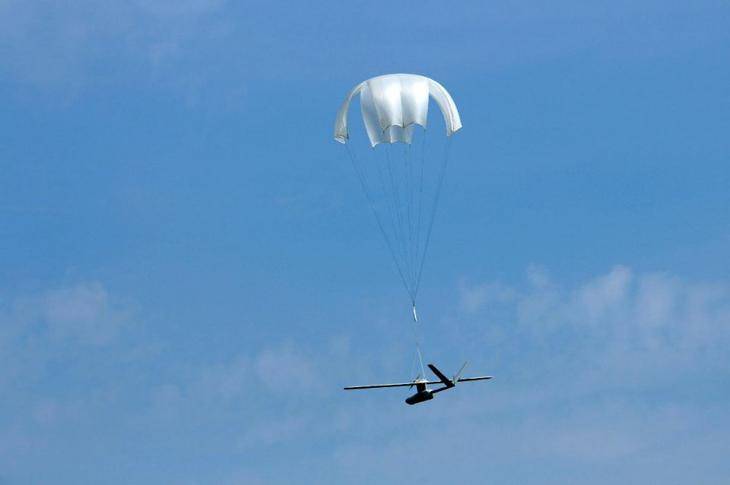
After returning to the launch area, he lands by parachute. Deploying the CH-802 complex, which consists of three UAVs, a transmitter and a control panel, takes 30 minutes, preparing the drone for the next flight is no more than 20 minutes. The CH-802 drone and spare parts kit carry in one backpack.
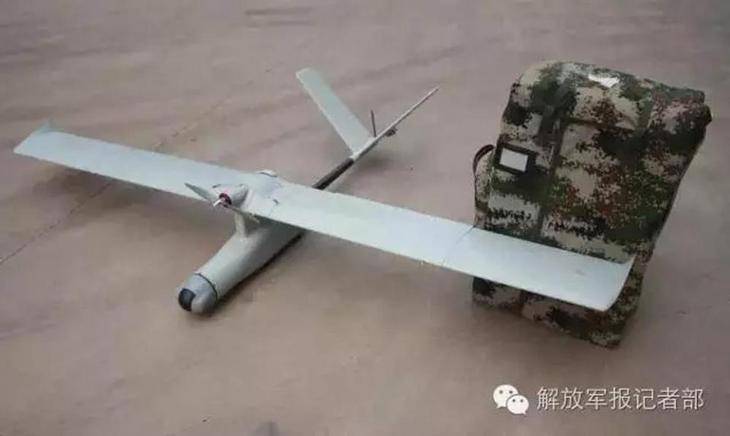
As the payload of the CH-802 unmanned aerial vehicle, replaceable modules are used in front of the fuselage. It can be night or day cameras. Video information obtained using the on-board equipment of the CH-802 UAV is transmitted to the ground control panel in real time. The entire complex CH-802, which is designed as portable, includes three UAVs, ground control stations and a launch catapult.
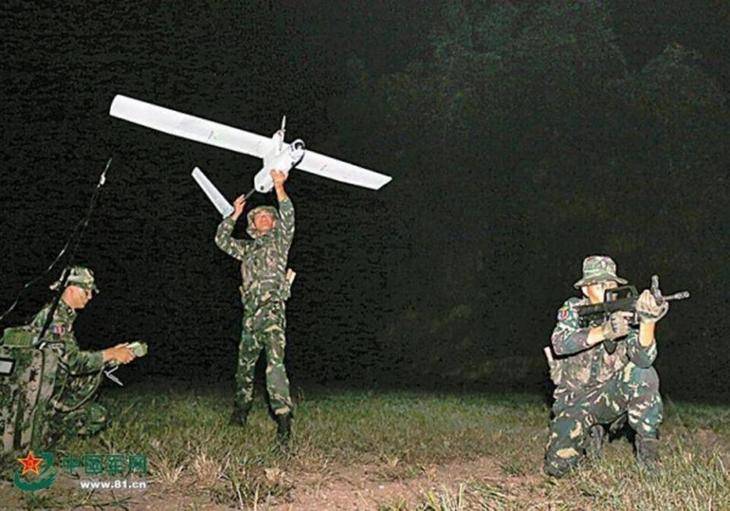
Although the CH-802 does not have a very high performance, its main advantages are its low cost and simplicity of design, which has ensured widespread use in the land units of the PLA.
UAV CH-802 is the most common lightweight drones of the Chinese army. The PLA also has other devices of this class. More advanced, but somewhat more expensive is the GY-SMG-220 UAV, created by Beijing-based China Eagle Aviation Science and Technology Co. The device is made of carbon fiber and Kevlar. According to the aerodynamic scheme, it is a high wing with a pushing propeller and a classic tail unit, carried out on a long beam. The lithium rechargeable battery provides energy to the electric motor rotating a three-bladed screw. The device starts manually, landing is carried out on skid gear.
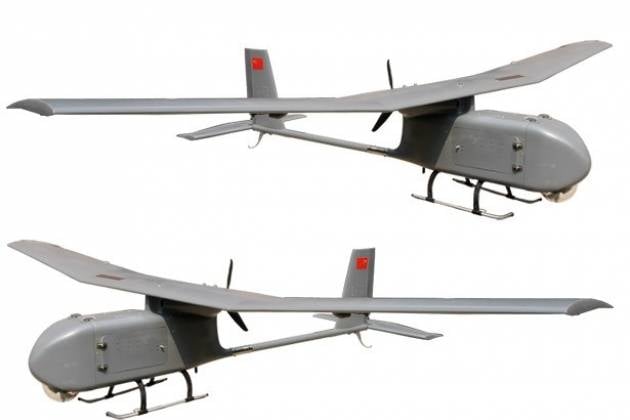
With a fuselage length of 1,2 m, the wingspan of the UAV is 2,2 m. The device with take-off mass 5 kg has a practical range of 70 km. Battery energy is enough for 40-60 min flight. Maximum speed - up to 90 km / h, cruising 60 km / h. Depending on the specific flight mission, one of the options for interchangeable equipment is installed. Despite the small payload weighing 0,5 kg, the drone is able to conduct aerial photography of the terrain, visual reconnaissance, and monitor the radiation situation. The flight can take place both in remotely controlled and in programmable mode.
In 2009, at the disposal of the Chinese military appeared UAV LT MAV created by AVIC. This drone is built according to the “flying wing” scheme and is launched from a compact portable catapult. Landing takes place on the fuselage.
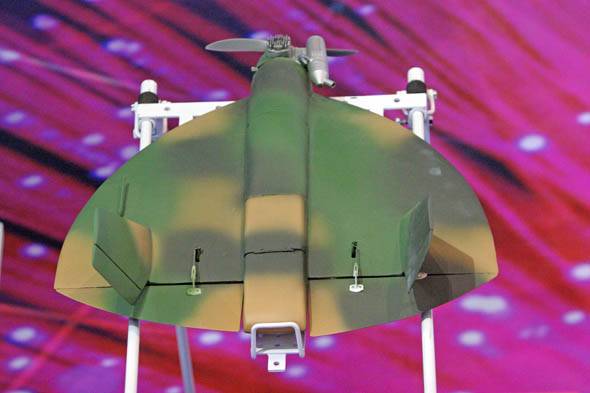
The take-off weight of this unit with an electric motor is 4 kg. Flight duration - up to 45 min. The maximum speed is 90 km / h. The ceiling is 1200 m. Like other drones of this class, the LT MAV is primarily intended for visual observation of the terrain at a distance of several kilometers from its front edge.
Disposable remotely piloted artillery reconnaissance Sky Eye
A few years ago it became known that in the PRC there is a development of small disposable drones delivered to a given area with artillery ammunition. Devices of this type are designed to adjust artillery fire and illuminate the target with a laser target designator. Most likely, the “helicopter” unit of the AVIC corporation — China Helicopter Research and Development Institute (CHRDI) —was the most successful in this. Its specialists created the compact UAV helicopter-type Sky Eye. It is reported that the Sky Eye, a one-time “artillery drone”, is currently being piloted by the military.
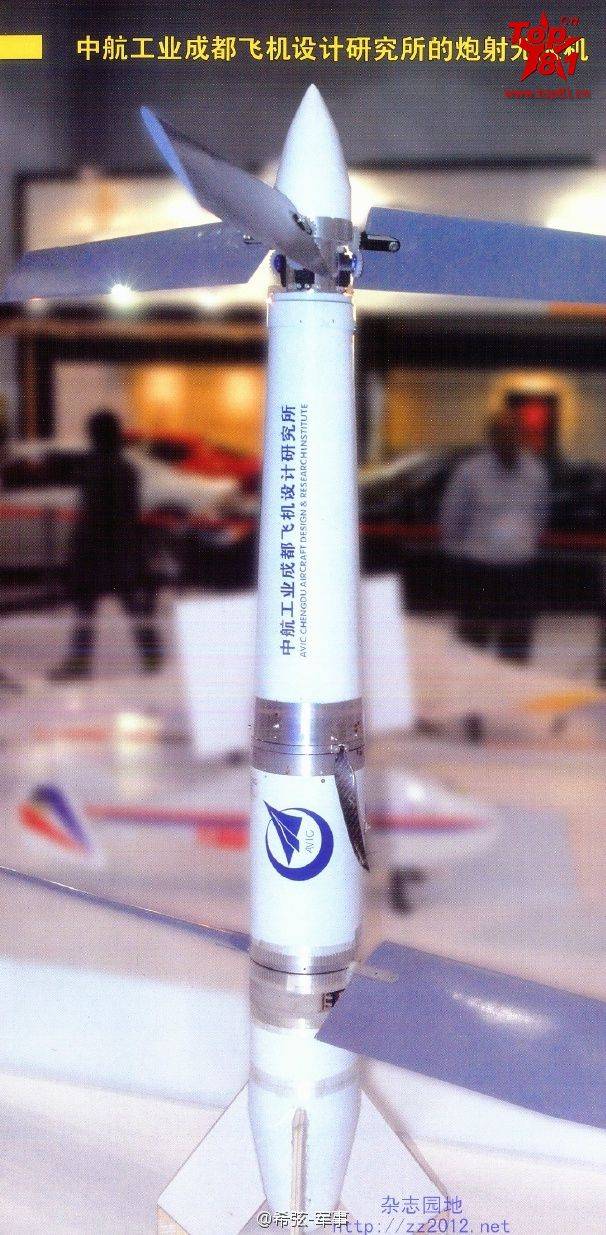
According to information published in the Chinese media, UAVs can be placed in shells of a caliber of at least 155 mm. Moreover, it is obvious that the shot should be sufficiently “soft”, which provides for the special design of the artillery ammunition. It is understood that, as a delivery vehicle for a disposable flying spotter, a rocket launcher system is best suited. But judging by the promotional materials published by AVIC, it also provides for firing from an 155-mm self-propelled howitzer PLZ-04.
After firing an artillery gun or launching a MLRS rocket, the projectile flies along a ballistic trajectory, and according to the timer signal, at a given point, it opens and brakes with a parachute. When the speed drops to the minimum value, the drone detaches from the projectile and expands the rotor blades rotated by an electric motor. The device freezes at a certain height and with the help of a television camera begins to search for a target.
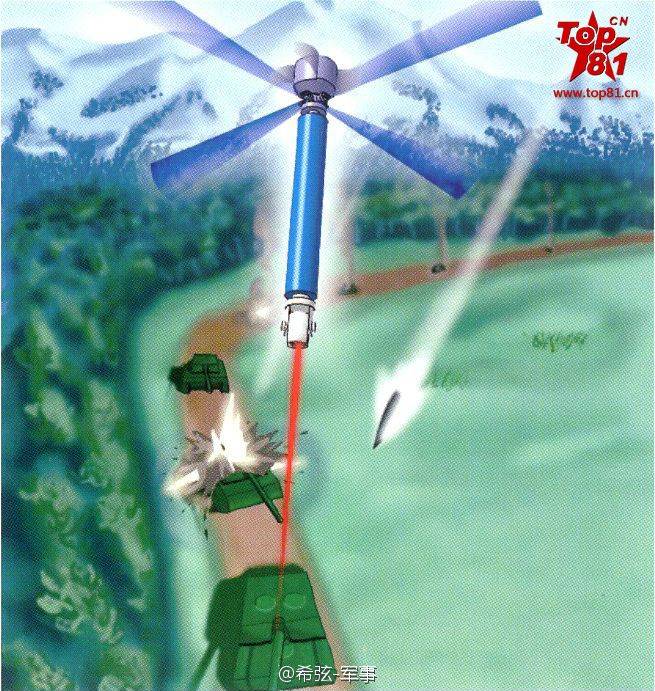
Having found the target on the monitor screen, the operator carries out its illumination with a laser. Search, tracking and highlighting of both stationary and mobile objects are possible. The energy of the Sky Eye UAV battery is enough to detect and illuminate several targets.
Development of unmanned scouts launched from under water
Another promising development is a one-time reconnaissance drone launched through a torpedo tube from the side of a submarine in underwater position. The model of the XC-1 Flying Shuttle from Civil Aviation University of China (CAUC) was demonstrated in 2012 at the 5 competition for the design of the aircraft of the future China Innovation Cup, held in Beijing.
A drone of a similar purpose is also being developed by the UAV Laboratory at Beijing University of Cosmonautics and Aeronautics (BUAA). The device reminiscent of the American Lockheed Martin Cormorant was demonstrated in 2013 at the Challenger Cup competitions organized by AVIC Corporation. Currently, all the detailed information on the development of drones based on Chinese submarines is classified.
Barricading Kamikaze Drones
As already mentioned in the previous part of the review devoted to Sino-Israeli cooperation in the creation of UAVs, the PLA is armed with the JWS01 ammunition, which is an unlicensed copy of the Israeli “kamikaze drone” Hapry. The Chinese disposable UAV JWS01 and its improved version ASN-301 are equipped with broadband passive radar seekers and are designed to destroy enemy air defense systems. Taking into account world trends in the development of remotely controlled barrage of ammunition, the Chinese Aerospace Science and Technology Corporation (CASC) in 2012 created a single-use miniature unmanned aerial vehicle CH-901 carrying an explosive charge. Although this unit was originally designed as a multi-purpose one and, if the reconnaissance module and parachute rescue system were installed, could be reused, they were subsequently abandoned for reuse.
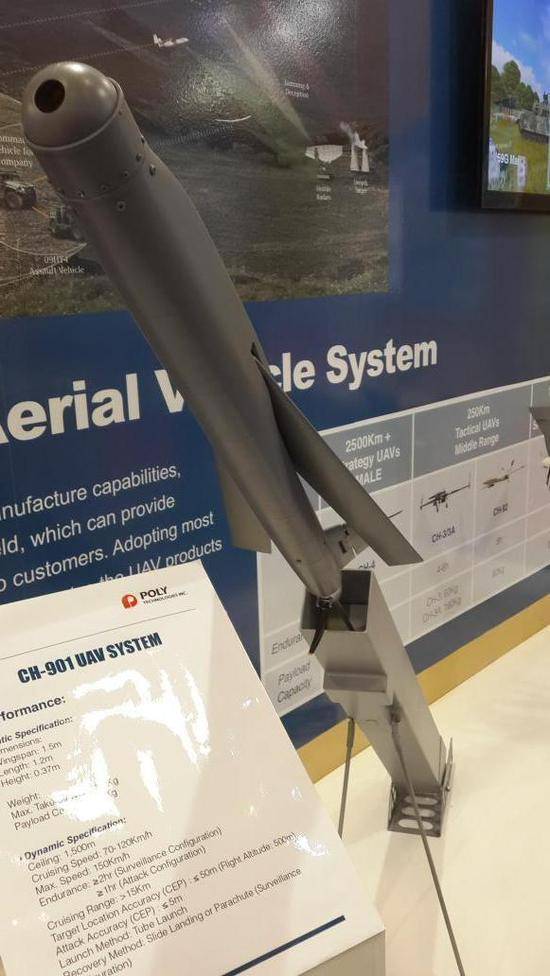
The CH-901 kamikaze drone combines the advantages of an unmanned aerial vehicle and a bomb, and is able to remain in the air for 40 minutes before it detects an object for attack. Barrage ammunition can be used both during combined arms combat and in anti-terrorist operations. The Chinese portable "drone-killer" with an electric motor weighs 9 kg, has a flight range of 15 km and a speed of up to 150 km / h. The minimum speed of barrage is 70 km / h. A kit consisting of three transport and launch containers and guidance equipment weighs 46 kg and can be carried by two military personnel. The resolving ability of a television camera allows you to detect targets at a distance of more than 1,5 km from an altitude of 450 m. Accuracy is 3-5 m. Depending on the combat mission, the device is equipped with a fragmentation or cumulative warhead. The fragmentation warhead has a continuous radius of destruction of 6 m, and the cumulative one is capable of penetrating up to 150 mm of homogeneous armor.
In May this year, at the Civil-Military Integration Expo 2019 arms exhibition held in Beijing, an UAV reconnaissance-strike complex was presented on the chassis of a Yanjing YJ2080C all-terrain vehicle, which can travel at speeds up to 125 km / h. A module is installed on the roof of the car, similar to a small-sized MLRS installation, with launch tubes of various calibers.
In fact, in tubes of smaller diameter there are four small reconnaissance UAVs SULA30, which are able to remain in the air for 1 hours, transmitting to the operator data on the terrain and location of the enemy. SULA89 "drones-kamikaze" are placed in eight pipes of larger diameter. The release of unmanned reconnaissance and barrage of ammunition is a powder charge. Each unmanned kamikaze carries a warhead weighing more than 2 kilograms and crashes into a target at a speed of 180 kilometers per hour. They can be used to destroy vehicles, light armored vehicles, field fortifications, enemy manpower. Among the priority goals: command and observation posts, command and staff vehicles, field communication centers, artillery and mortar batteries, as well as military air defense systems. According to information published in the media, all twelve single-use drones can be launched at short intervals, able to form a swarm and attack the target almost simultaneously. They can also act individually, sequentially destroying various targets on the battlefield. One such unmanned complex is capable of detecting and destroying a small column of equipment in the near rear of the enemy.
SW6 unmanned helicopter reconnaissance
The Z-2016WB reconnaissance and attack helicopter was presented at the Airshow China 11 aerospace exhibition in Chinese Zhuhai. One of the main tasks of the new helicopter is to monitor the situation and detect various objects both in order to obtain intelligence data and to carry out an attack. For this, it is proposed to use optoelectronic equipment capable of monitoring the terrain at any time of the day and in any weather conditions, as well as disposable SW6 UAVs launched from external suspension nodes. When dropped from a carrier helicopter, the device spreads its wings and begins an independent flight under the control of the operator.
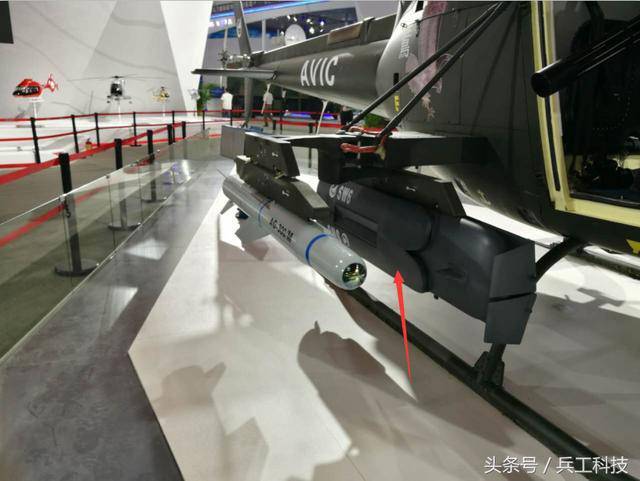
In front of the SW6 UAV there are hinged mounts for folding wing consoles equipped with ailerons. In front of them there is an additional vertical plane. Closer to the tail, two more consoles with vertical stabilizers are mounted on hinges. In the rear of the fuselage is a propeller group. In the transport position, the highly located front wing is folded by turning back, while its planes lie on the fuselage. The rear wing of a larger scope fits under the fuselage, turning forward.
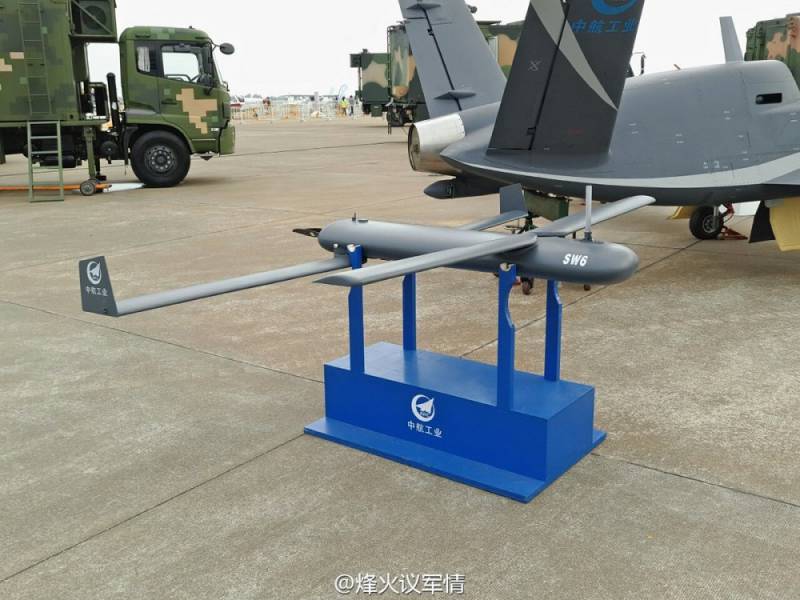
A reconnaissance helicopter equipped with an unmanned aerial vehicle, operating in areas with strong ground air defense, is less at risk and is able to obtain more information. Small-sized UAV has less acoustic, radar and visual visibility. If necessary, a module with an interference generator can be installed on it to suppress and divert air defense equipment. Theoretically, such an apparatus is also capable of carrying a small explosive charge, which expands the combat capabilities.
For patrolling and surveillance in the near zone, the Chinese military, border guards and police are increasingly using commercial multi-screw remotely piloted vehicles. Often, the capabilities of commercial vehicles that are on sale are quite enough to quickly monitor the perimeter of the guarded object in case of an alarm, or to record the actions of military units and individual military personnel during exercises for further analysis.
Multi-screw commercial drones in the power structures of China
For patrolling and surveillance in the near zone, the Chinese military, border guards and police are increasingly using commercial multi-screw remotely piloted vehicles. Often, the capabilities of commercial vehicles available for sale are enough to quickly monitor the perimeter of a guarded object in the event of an alarm or to record the actions of military units and individual military personnel during exercises for further analysis.
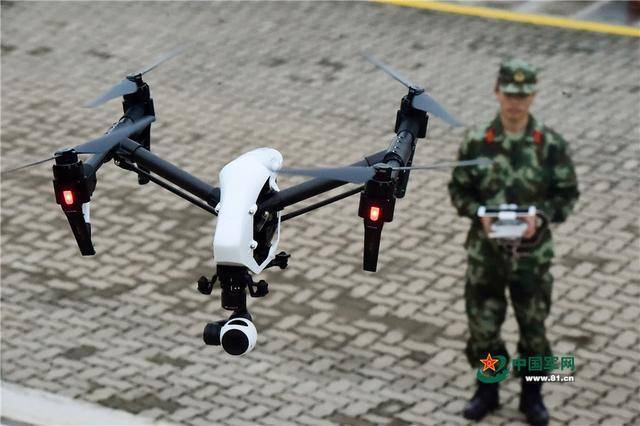
Drones appeared on the civilian market that were able to soar in the air for up to 1 hours, move away from the operator at 5 km and, in the event of a loss of communication, independently return to the launch point. Given the fact that quadrocopters are relatively inexpensive, equipped with satellite navigation systems, high-resolution cameras, quickly prepare for flight and do not require a highly skilled operator to use, they are popular in the power structures of China. Currently, a large number of models, originally intended for civilian use, are used in army units, in police, border guards and are used by Chinese intelligence agencies.
To be continued ...
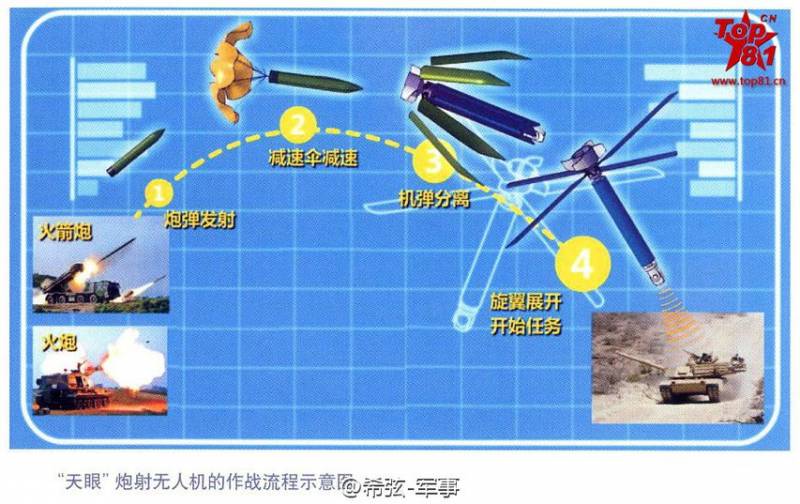
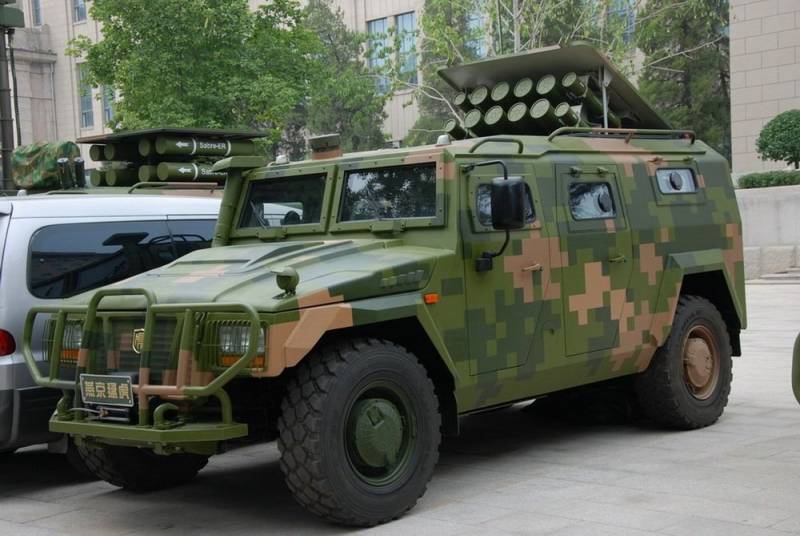
Information